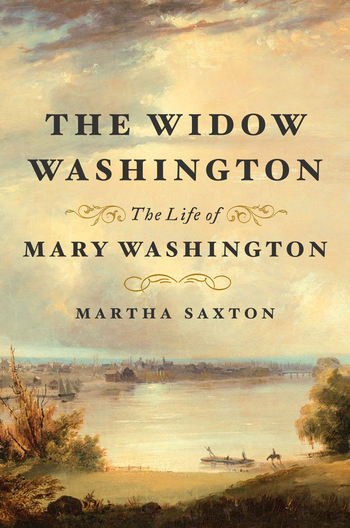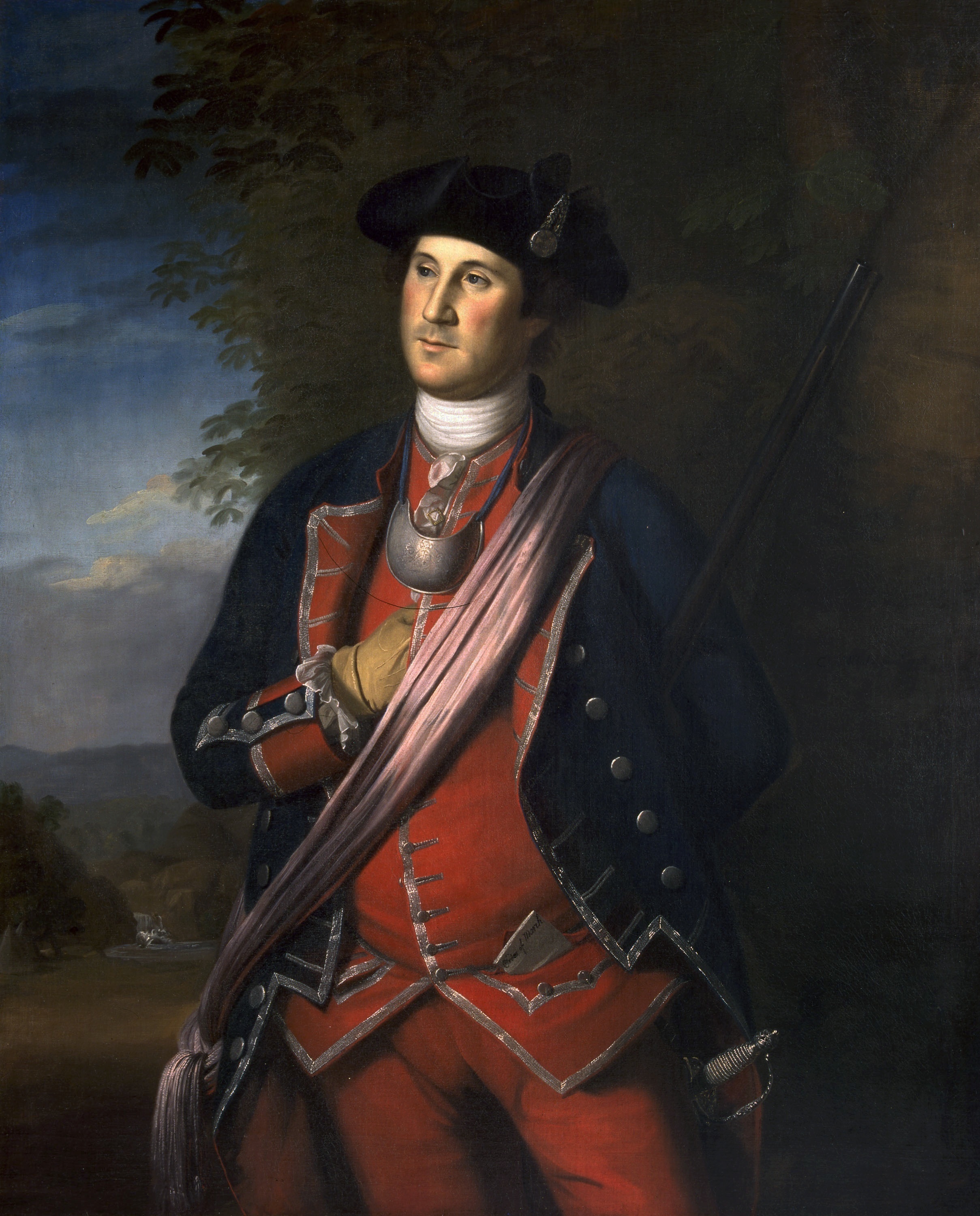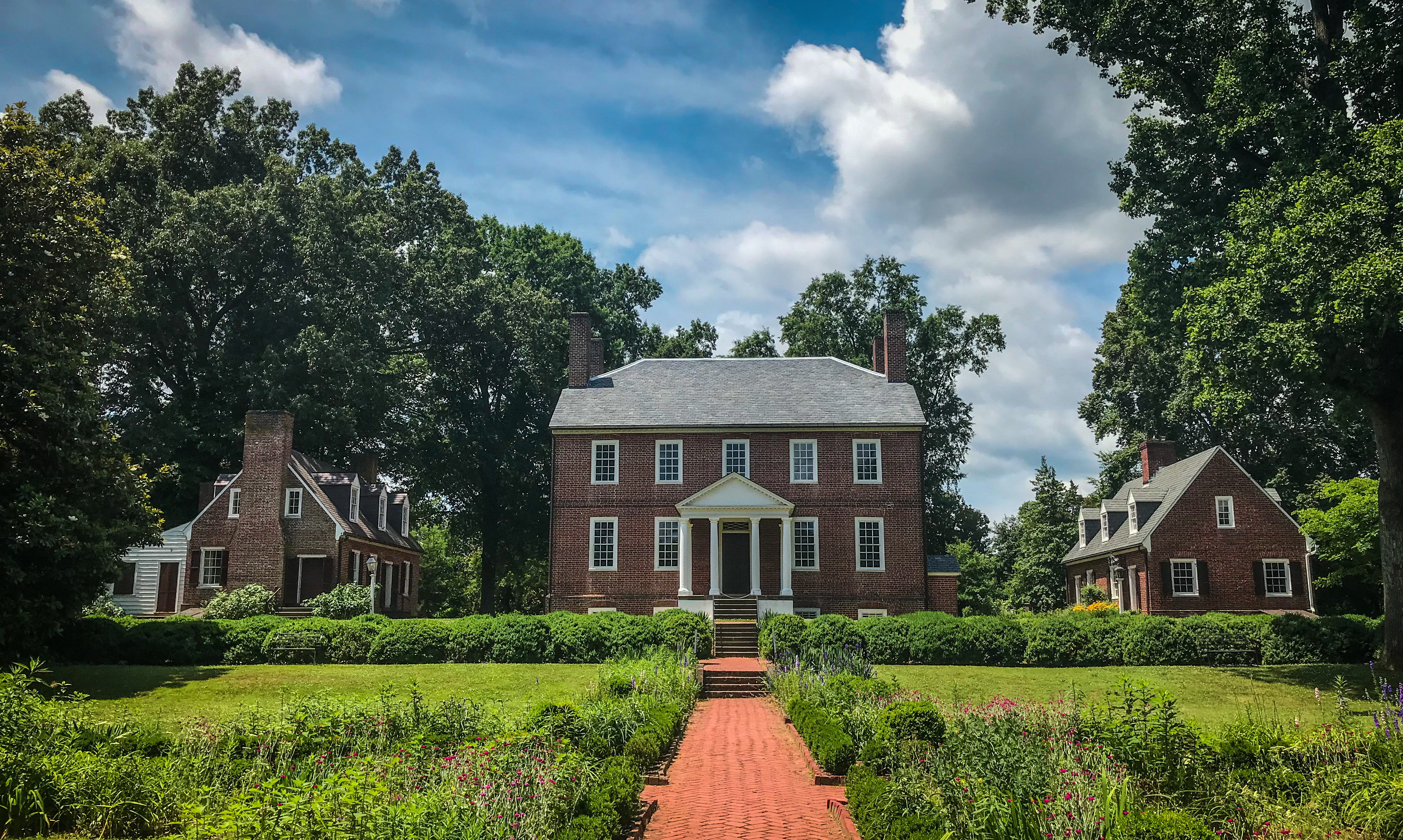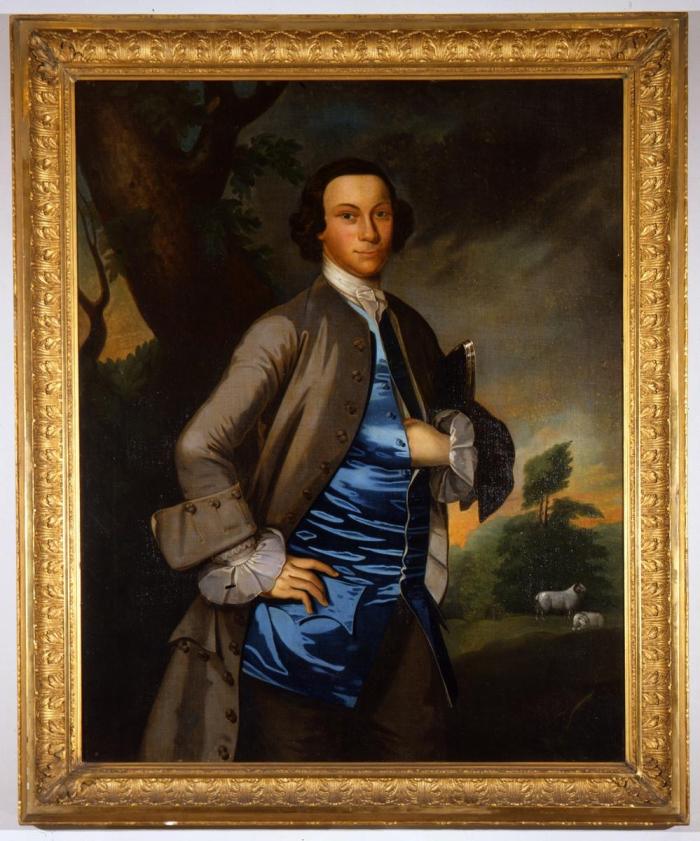Denigrated as "crude," "illiterate," "self-centered," and "slovenly," Mary Washington had the singular destiny to have a son whose potential for being idealized seems to have been even greater than that for motherhood.
-
Fall 2020 George Washington Prize
Volume65Issue8
Excerpted from the George Washington Book Prize finalist The Widow Washington: The Life of Mary Washington, by Martha Saxton (Farrar, Straus and Giroux).

Mary Ball Washington was orphaned early, grew up poor, and was later widowed with five children under the age of twelve to support. She did the best she knew how for her family in the harsh world of the eighteenth-century Chesapeake. She poured her exceptional vitality, deep religious convictions, and unflagging persistence into her first son, George. We still admire him for the honorable way he used those qualities to create a country and a government. Why has she not received historians' respect for her years of lonely and challenging work?
Since her death in 1789, the first president's mother has endured a tumultuous half-life. George Washington's first chroniclers extolled her as the pious and self-sacrificing mother of the sainted president. President Andrew Jackson praised her richly at a ceremony to lay the cornerstone for a monument planned for her. But after the Civil War, she started a steep descent in the esteem of her son's scholars. By the mid-20th century, she had become unloving, jealous, whiny, and greedy. That monument was never erected.
The caricature of an incompetent, crude, imperious, selfish, and unloving woman flowered fully in the 1940s and '50s with Douglas Southall Freeman's massively detailed six-volume work. In James Flexner's Pulitzer Prize-winning Indispensable Man, the author called her a "termagant." Most recently, Ron Chernow described Mary as "crude," "illiterate," "self-centered," and "slovenly." In the index to his biography of Washington, subcategories for Mary include "critical nature of," "stubborn and difficult personality of," and "thwarting of GW's career attempted by." (Martha, by contrast, merits the entries "kindness and generosity of," "strength and practical nature of," "support and devotion of.")
As I read George Washington's biographers' shape-shifting accounts of his mother, my confusion gave way to anger. I have spent my life studying and writing North American women's history to try to retrieve some of what has been lost, to try to replace incomprehension or criticism with historical context, and to substitute evidence for stereotypes and sentiment. I research and write to try to be fair to women whom historians have ignored or misjudged. Mary had clearly suffered from egregiously unfair treatment.
I am normally not drawn to write about women whose fame derives from men or about slaveholding women. But the double standards many historians used in judging mother and son and more than a century of gratuitous hostility toward Mary called out to me for a response. Trying to be fair to a slave-owning woman was a complicated challenge, as complicated as our nation's history. It was a challenge analogous to those historians in the past had faced in writing about her, at which I felt they had largely failed. They did not like her style of mothering and of womanliness. I had to try to see what kind of a mother she really was, and what kind of a woman. I didn't like her ownership of slaves. I had to try to understand it: what it meant for her slaves, for her, and for her children.
Mary Washington had the singular destiny to have a son whose potential for being idealized seems to have been even greater than that for motherhood. Maternal stereotypes into which historians slotted Mary in the absence of evidence have become darker and more complex over the centuries. Maintaining George Washington's elevated reputation has come at the cost of his mother's, because it has seemed to his scholars to be a zero-sum game. She has been the object of both meaningless praise and, more often, antagonism from writers who dreamed of a different mother for their hero George.
Since her death, politicians and historians have used their idea of her to make a wild assortment of arguments. Of course, she was instrumental in early hagiography about George. Then, when stereotypes about mothers became less rosy and evidence of George's intermittent irritation with Mary emerged, a now-nasty mother served to show how George bravely managed to escape her (with his heterosexuality intact) to fight the British and found the nation. Implicit in this view was that the Founding Father (and the nation) didn't really need a mother, but a bad one would serve, too. Along the way, she has also served for white supremacists as a re- minder of the good white stock from which good Americans must come. And she has served, erroneously, as an example of a loving mistress of slaves. Mary's memory (the one where she is a prop in George's hagiography) served as a rallying cause for women in the late nineteenth century to try to soften North-South animosity.
The ways in which Mary Washington's life had been used with little or no attention to her actual experiences and choices distressed me as a historian and a feminist. They motivated me to try to find out as much as I could about who she was. Perhaps she could finally tell us something about the world in which she lived and how she raised her children, including her famous son.
Understanding Mary Washington's life requires disassembling old assumptions and constructing a new story about her that will have some stability. Most scholars have used only the handful of readily available but ambiguous sources about her. They consist of evidence of her unwillingness to let her son George enter the British navy at fourteen; letters from George telling her that he was called to military service by his colony and criticizing her reluctance to see him serve; and letters in which he complained about her asking him for money.

I first stumbled over mother and son when I was doing research on 18th-century widows in the Chesapeake. In that society, white widowed mothers and their firstborns were often at odds over land, money, slaves, timber, and other valuables. Husbands typically left their widows use of their property-or some portion of it-but only during their lifetimes, or in the case of Mary Washington for a limited number of years. Her husband's will also threatened her with losing custody of the children if she remarried and was found to be not fulfilling her duties as proper guardian of their property. Legally, a widow's role was to be transmitter of property from man to man.
As a consequence, the inheritance laws of early Virginia built ill will between inheriting widows and their oldest sons. Laws reinforced the belief that women should not own land or run farms and plantations. Adult sons were likely to see their mothers' possession of family land as illegitimate and often acted on that perception.
The annoyance George expressed about his mother's requests for money seemed to me to be connected to the inherent widow's dilemma in Virginia. I was willing to believe, as her critics said, that she might not have run her farm profitably, but that was hardly unusual for a man or woman in mid-18th-century Virginia. I could imagine that she was a brusque person, distracted by the labor of raising both crops and five children, but the antagonism scholars directed at her continued to surprise me.
Reading through biographies of George, I saw that few historians took into consideration that Mary was born into a culture where mothering was extensive rather than intensive. Mothers looked out for their flock's health and safety and trained them to Christian virtue and for their adult roles. But with the cares of running a farm, early eighteenth-century mothers had little time to attend to the drawing out and loving nurturing of each child's individuality. And no historians seem to have noted with any sympathy that Mary was born in a rougher time and came from a rougher social background than that of her children, or that it was largely through her work that they ascended to a higher status than hers.
With these thoughts in mind, I started looking at primary sources. She was hard to find. She left no diary, and only a few of her letters have survived. Mary married the widower Augustine Washington, who himself left few traces. Her children and grandchildren mentioned her in letters, usually briefly. Her family of origin litigated tirelessly, their disputes flickering across her childhood and lighting up aspects of it. Her mother, although apparently illiterate, learned to use the courts herself.
Archaeological work at Ferry Farm in Fredericksburg has produced much valuable material evidence about her life and efforts to keep her family together after she was widowed. Mount Vernon has a few of her lists of expenditures and two small gold rings. Her few letters are scattered. I have learned a considerable amount about Mary Ball Washington as a widow directly or indirectly from her son's lengthy and expertly edited papers. Michelle Hamilton at Mary Washington House also has collected useful materials on its onetime owner, as they have at the Mary Ball Washington Museum in Lancaster County, Virginia.
It is oddly fitting that George, with his lifelong preternatural attention to the cost of things, mentions Mary first in his teenage account book. He was in touch with all the family members, and through their notes about gatherings, gifts, illnesses, loans, debts, real estate dealings, and purchases, glimpses of Mary's busy later years emerged.
George, of course, is a problematic source because their relationship was complex and at times taut with his aggravation and defensiveness. Also, as the years went by, he wrote with increasing attention to protecting his reputation. The gaps in his correspondence with Mary show that he or someone else did not keep all her letters. After his death, his widow, Martha, made a first edit of his letters, destroying those between Mary and George. There is circumstantial evidence that she did not like her mother- in-law. Perhaps she found Mary's letters superfluous.
Another source of information about Mary comes from the books she owned and read and reread. Her first book, John Scott's Christian Life from Its Beginning to Its Consummation in Glory, came to her several years before her marriage and introduced her to meditative and devotional reading. Arguably, the most important book in her small collection was Matthew Hale's Contemplations Moral and Divine, which had belonged to her husband Augustine's first wife and which he gave to Mary. Mary made it her own learning and teaching manual. Her children and grand- children recalled her quoting from it and retelling its stories and wisdom.
The records do not produce a picture of a crude, selfish, poor manager from whom George had to escape to make his mark on the world. The admittedly incomplete brush strokes of the portrait suggest a determined, energetic, anxious woman who loved her children and tried to do her utmost for them. Her love came with worry and conditions. She raised her children with the hopes of securing their prosperity in this world and salvation in the next. She persisted in her lessons and demands with a thoroughness that no doubt could be wearying. George, her firstborn, probably received the strongest charge of her intense piety, drive, and high standards. She read devotional literature and introduced the habit to George. Neither illiterate nor slovenly, she practiced frugality to a fault. She was not trained in gen- teel drawing rooms, but she gained access to them for her children.
Death haunted Mary's life, like those of so many Virginians of her generation. Her father died when she was three, her stepfather when she was six. Her mother and brother died when Mary was about twelve. Her culture taught her to resign herself as quickly as possible to loss and carry on. A scarred girl working to make herself useful, she grew to adulthood in the family of her half sister Elizabeth. Her early experiences, like those of so many of her contemporaries, left her emotionally battered, with fierce survival instincts, blunted empathy, and the firm belief that bettering her circumstances by holding on to what she had-including the labor of other people-was her duty. Also like her fellow white Virginians, the fragility, mutability, and transatlantic dimension of her family kept her attention focused relentlessly on sustaining and bettering her family.
Mary became a slave owner at three years old, in a period when Virginia was importing large numbers of Africans and working out the brutalities of exploiting their labor. She never doubted the necessity of slavery and seems to have given no regard to the family ties of slaves or their preferences of any kind. Owning slaves distorted and limited the sensibility of white Virginians. Mary was no exception. Raised on a small family farm, she had hands-on experience in forcing men and women to do her will. She had to prove herself extra strong because she was a girl and, by twelve years old, parentless. Unlike wealthier slave owners, she did not have overseers to shield her from the coercion and "foul means," as the planter William Byrd put it, required to force people to toil for her.

Mary lived surrounded by slaves her entire life. The slave owner Lizzie Bain Partin wrote later that it "requires force" to get slaves to be slaves. One surviving anecdote has Mary enraged by a young slave boy's disobedient handling of her carriage. She is reputed to have grabbed the whip out of his hands and lashed him with it, cursing him. If the story is true, it is in no way remarkable or hard to believe. In a similar incident, the eighteenth-century slave owner Lucy Byrd beat her slaves brutally, shocking even her callous husband, William, not because she beat the slaves, but because she did it before the guests went home. Evidently, like Lucy Byrd, Mary did not care that there were witnesses.
Mary's detractors include this as evidence of her crude, overbearing character. But if George or Mary's husband, Augustine, had done it, and there is no doubt that they did similar things, it would have gone unnoted. Patriarchs beat their slaves. The myth is that women slave owners largely did not.
Mary's small inheritance of land and slaves allowed her to marry up, like her mother and like each of her five children. She lost her husband when she was in her mid-thirties. She raised her four boys and one girl, struggling with little cash, worn-out acreage, and often indifferent or dishonest overseers. She never remarried, preferring independence and the secure guardianship of her children to the chance of acquiring a delinquent spouse.
Apart from Mary's displays of aggression and independence that have put off George's biographers, her wrangling with her son over money has been central to their antagonism. As Mary's sons and stepsons married, taking with them lands and slaves that had previously been under her control, her circumstances became more and more straitened. In the interval between the Seven Years' War and the Revolution, George was living with his new wife, the enormously wealthy Martha Dandridge Custis. He himself was going deeply in debt, beautifying Mount Vernon, buying elegant clothes for his children, wife, and himself, acquiring luxuries like a green coach and lacy livery for his slaves, adding land and slaves to his holdings. George started complaining about his mother's relatively modest demands as he grew more anxious about his own and Martha's expenditures. He was skeptical of her need and found her requests irritating and burdensome, although he lent his brothers Samuel and Charles, who would prove to be utterly profligate, much larger sums.
Almost none of George's biographers have questioned his disbelief about Mary's claims that she was suffering financially. Nor have his biographers put in the balance George's remarkable wealth with his mother's reduced circumstances.
Mary and her son's quarrels over money brought up questions about changing dependency and shifting ideas of reciprocal responsibilities, while underneath lay their mutual tightfistedness. George also felt defensive about his reputation as a good son. Mother and son stubbornly argued from a sense of right, and in Mary's case from economic want. But they remained tied to each other throughout their lives in a relationship that blended love, resentment, respect, and conflict. It is hard to conclude that these battles were entirely about Mary's greed.

George and his historians have criticized Mary particularly strongly for complaining about her hard life as the Revolution drew to a close and she had to flee with family members to the mountains. Mary, her daughter, Betty, Betty's husband, Fielding Lewis, and Mary's younger sons had all suffered from the Revolution, in which they were so intimately caught up. They endured shortages of essentials, rapid, devastating inflation, and social turbulence. At the end of the Revolution, Mary had to trek one hundred miles across the Shenandoah and up into the Alleghenies to avoid an anticipated British attack. Within three weeks, she lost her son Samuel, and Betty lost her husband, Fielding, on whom Mary, too, had depended for financial support and comfort. And Betty became alarmingly ill. Mary was frightened. She had lost those she relied on; she was in her seventies and uprooted by the Revolution, and she had not seen George in five years. She complained about her difficult life and circumstances to those around her. No doubt she repeated herself.
Historians have incorrectly accused her of starting a petition for a pension from the state legislature of Virginia. There is no evidence that she did that. Someone brought up the idea of a possible pension, and the governor of Virginia, a friend of George's, notified him. George had it squelched. There is evidence to suggest that an enemy of his initiated the idea to embarrass him.
Mary Washington was hardworking and surrounded by fears to the end. She loved her children and, for better and worse, seems to have loved George above all. The death of his father left him more open to his mother's training and emotional patterns than a child with both parents would have been. Her experience of having to be her own parent at twelve or thirteen also no doubt affected the high degree of family collaboration that she expected from her older offspring.
Mother and son were very similar, but their paths diverged dramatically. Mary and the rest of the family made it possible for George to learn and to grow. Mary had only a smattering of education before taking on her increasingly exhausting family responsibilities. She used her books to grow spiritually, but they could not take her beyond the limits of the hierarchical and violent society in which she spent her life.
Both mother and son loved the outdoors and gardens. They shared the joyous confidence that comes from physical strength and well-being. Both of them enjoyed exercise, particularly horseback riding, and were good dancers. (George, who from childhood had had a number of health crises and whose public life put him under years and years of strain, was not as strong as his mother. She outlived two of her children, dying at about eighty; he at about sixty-seven.)
They had similar religious views. George started quoting the philosophy of Matthew Hale and the other divines that Mary gave him to read at a very early age. Their thinking influenced him profoundly throughout his life. Mary worked hard to live up to her and George's shared ideals of stoicism and the calm acceptance of life's evils, but sometimes she failed. During the Revolution and in the turbulent years afterward, the strength to pacify her spirit often eluded her.
Mary pinched pennies, having come from very little. George, even when he became wealthy, drove a very hard bargain and paid remarkable attention to the cost of things. His calculations of labor efficiency among enslaved people after his retirement and his obsessively detailed letters to his overseers and managers attest to this trait. Part of his ultimate decision to free his slaves came from his knowledge that they were unprofitable to him; he would have done better with a smaller labor force. I do not dispute, indeed I admire, his humane reluctance to separate families and his inclination to go along with his dear friend Lafayette and the others who urged him to liberate his workers. But it is impossible to read his papers and not conclude that his calculations about the costs of slavery to himself were significant in his decision.
That as a mature man George began to refuse to sell slaves who were unwilling to be sold and, famously, freed his own slaves in his will reveals his wide experience and habit of reflection, which helped distinguish him from both his mother and his wife. Mary lived her life, as did most other white Virginians, limited by a society with exploitation and cruelty at its core.
Mary had a "high temper." She was easily displeased and exacting. No doubt George suffered from this. He was endlessly defensive throughout his life, particularly with her, but also with superiors or critics. But like her, he had a strong temper, and the critic in him seldom rested.
Mary's hard early life prepared her to struggle, and perhaps she found enjoyment elusive. She was, I suspect, at her best with her daughter, who understood the constraints Mary lived under as a woman in a male-dominated world. Betty comes down to us as a capable businesswoman and an intelligent and loving mother, sibling, and daughter.
While they cannot be completely separated, I have tried to disentangle the biographical fates of mother and son. George, after all, did not dominate the North American public stage until his mother was in her sixties, with much of her tough, active life behind her. There are many things we will probably never know about Mary Ball Washington, but I know she could be prickly, opinionated, and stern. (So could her son.) I have tried in what follows to give her the dignity of her independent existence. She deserves better than what she has had at the hands of scholars.

